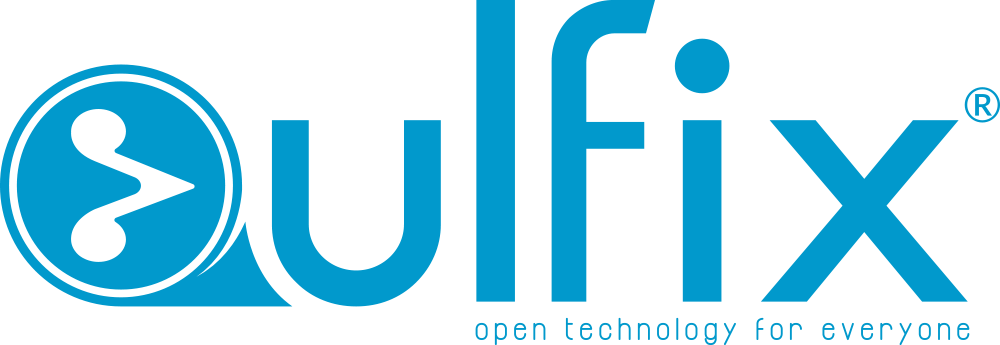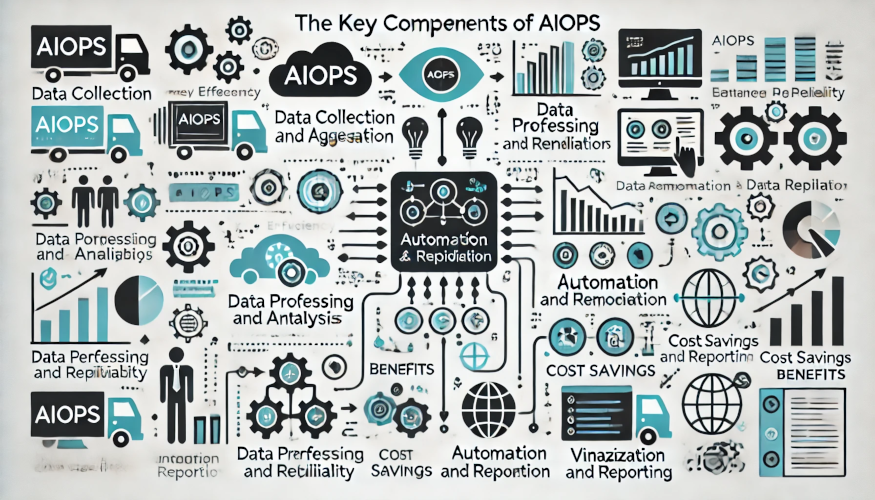What is AIOps?
AIOps, or Artificial Intelligence for IT Operations, refers to the application of artificial intelligence (AI) and machine learning (ML) techniques to enhance and automate IT operations. AIOps platforms leverage big data, analytics, and machine learning to improve the efficiency and effectiveness of IT operations by:
- Automating Routine Tasks: Reducing manual intervention in repetitive and mundane tasks.
- Proactive Incident Management: Identifying and resolving potential issues before they impact users.
- Enhanced Monitoring: Offering improved monitoring and observability of systems and applications.
- Root Cause Analysis: Accelerating the identification of the underlying causes of issues.
- Predictive Insights: Anticipating future problems and optimizing performance through predictive analytics.
AIOps aims to manage the complexity and scale of modern IT environments, thereby enabling faster, more reliable, and cost-effective IT operations.
Key Components of AIOps
- Data Collection and Aggregation:
- Log Data: Collecting logs from various systems and applications.
- Metrics: Gathering performance metrics from servers, applications, and network devices.
- Events: Capturing events that signal changes in the IT environment.
- Topology: Mapping the relationships and dependencies between different components of the IT infrastructure.
- Data Processing and Analysis:
- Correlation: Linking related events and metrics to identify patterns.
- Anomaly Detection: Using machine learning algorithms to detect deviations from normal behavior.
- Root Cause Analysis: Identifying the primary cause of issues by analyzing correlated data.
- Automation and Remediation:
- Automated Actions: Executing predefined scripts or workflows in response to detected issues.
- Self-Healing: Enabling systems to automatically correct certain types of issues without human intervention.
- Predictive Maintenance: Anticipating potential failures and performing maintenance to prevent them.
- Visualization and Reporting:
- Dashboards: Providing real-time visualizations of IT performance and health.
- Alerts and Notifications: Sending alerts to relevant stakeholders when issues are detected.
- Reports: Generating detailed reports for analysis and compliance purposes.
Benefits of AIOps
- Improved Efficiency:
- Reduced Manual Work: Automation of repetitive tasks frees up IT staff to focus on more strategic initiatives.
- Faster Incident Response: Automated detection and response mechanisms speed up issue resolution.
- Enhanced Performance and Reliability:
- Proactive Problem Solving: Predictive analytics helps in identifying potential issues before they impact users.
- Better Resource Utilization: Optimizing the use of IT resources through continuous monitoring and analysis.
- Cost Savings:
- Reduced Downtime: Minimizing the duration and frequency of outages reduces associated costs.
- Lower Operational Costs: Automation reduces the need for extensive manual intervention, cutting operational expenses.
- Improved User Experience:
- Consistent Service Delivery: Proactive management and quick resolution of issues ensure better service quality.
- Higher Availability: Ensuring that systems and applications are available and performing well enhances user satisfaction.
Use Cases of AIOps
- IT Operations Management (ITOM):
- Automating routine tasks such as patch management, configuration updates, and compliance checks.
- IT Service Management (ITSM):
- Enhancing incident management, change management, and problem management processes.
- Application Performance Management (APM):
- Monitoring application performance and detecting anomalies to ensure optimal user experience.
- Network Performance Management (NPM):
- Monitoring network traffic and performance, identifying bottlenecks, and optimizing network operations.
- Security Operations:
- Integrating with security information and event management (SIEM) systems to enhance threat detection and response.
Challenges in Implementing AIOps
- Data Integration:
- Aggregating and normalizing data from diverse sources can be complex and resource-intensive.
- Algorithm Selection:
- Choosing the right machine learning algorithms that fit the specific needs and characteristics of the IT environment.
- Change Management:
- Managing the cultural and organizational changes required to adopt AIOps solutions effectively.
- Scalability:
- Ensuring that the AIOps platform can scale to handle the growing volume of data and complexity of modern IT environments.
Future Trends in AIOps
- Increased Adoption of AI and ML:
- Continued advancements in AI and ML will lead to more sophisticated and accurate AIOps solutions.
- Integration with DevOps:
- AIOps will become more integrated with DevOps practices, enabling continuous monitoring and feedback throughout the development lifecycle.
- Edge Computing:
- With the rise of edge computing, AIOps will need to handle and process data closer to the source, requiring new approaches to data collection and analysis.
- Enhanced Security:
- AIOps platforms will increasingly incorporate security analytics to provide comprehensive IT operations and security management.
- Hybrid and Multi-Cloud Environments:
- As organizations adopt hybrid and multi-cloud strategies, AIOps will play a crucial role in managing and optimizing these complex environments.
In summary, AIOps represents a transformative approach to IT operations, leveraging the power of AI and ML to enhance efficiency, reliability, and user satisfaction. Its adoption is driven by the need to manage the increasing complexity of modern IT environments and the desire to deliver superior digital experiences.

